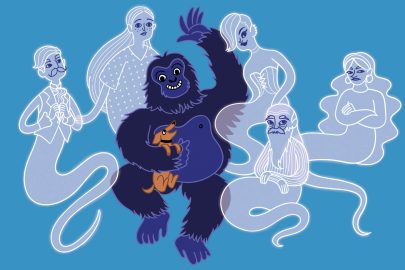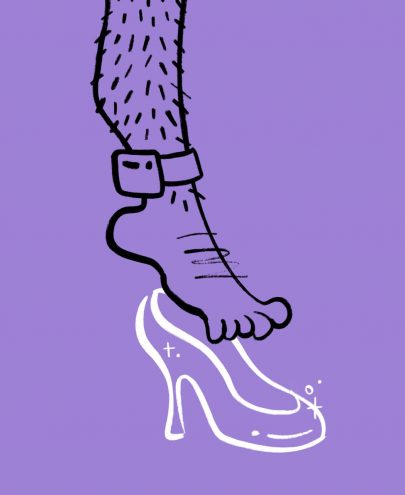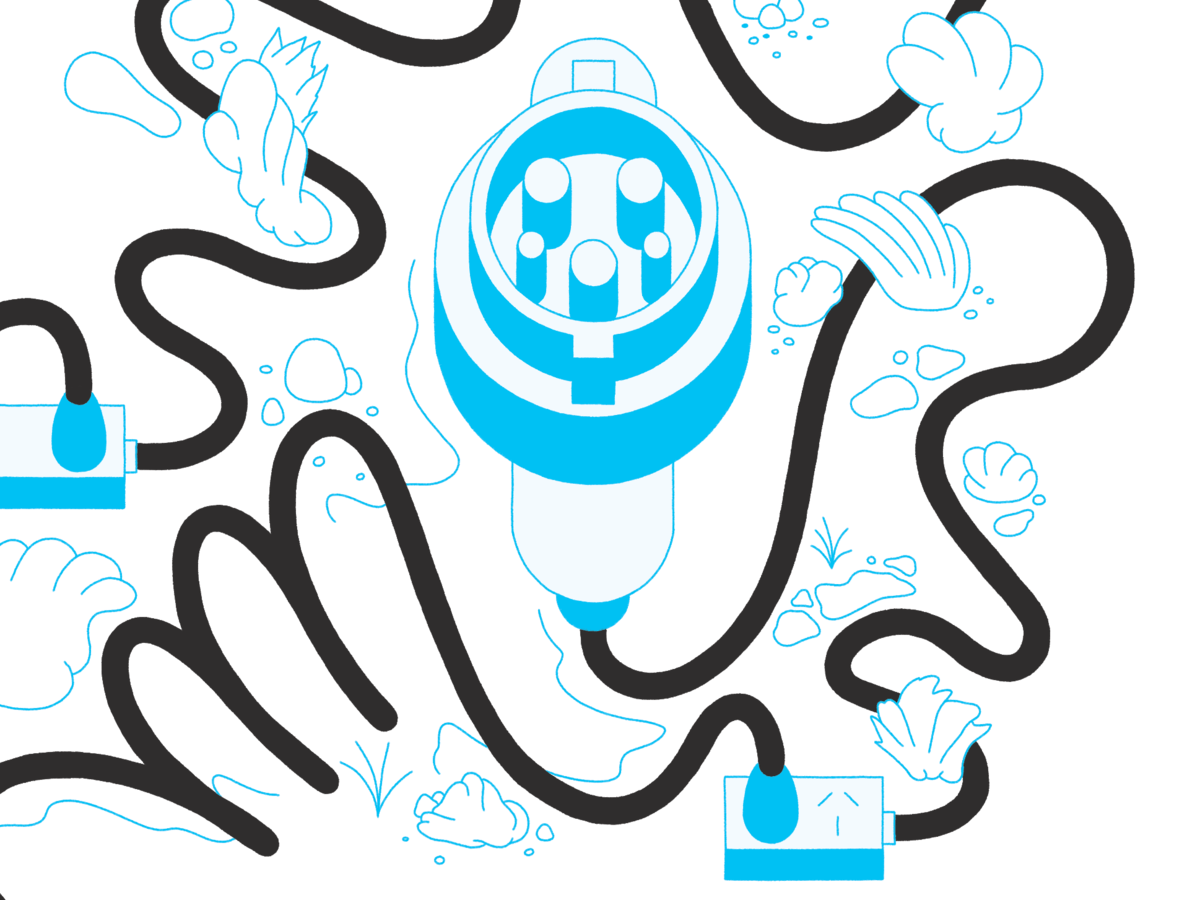Jun 17, 2014 etc
Bald, battered and bereft, cancer sufferers at Look Good Feel Better workshops find a little pampering goes a long way.
It’s not about the disease. That’s what strikes me most about Look Good Feel Better. And, yet, of course it’s all about the disease.
There’s no escaping the C word when you first walk into a LGFB workshop, looking around, surveying your scared and downcast fellow participants — wigged, patchy and bald, resembling odd, alien-like battered wives But, here’s what sets it apart from other cancer charities: it’s not about the disease, it’s about the person with the disease.
I guess I should be grateful to the myriad organisations that work tirelessly to raise awareness of a seemingly ever-increasing list of cancers. But, to be honest, I think of them as a rather competitive, definitely political and potentially self-serving lot. Uncharitable, I know. But as a cancer survivor, I figure I’m allowed to take liberties with my thinking that others are not.
Forgive me for not wanting to be reminded about breast cancer every time I open a magazine or walk along the grocery aisle: the youngest, most photogenic face they can find to be a spokesperson, unsettling your soul, making you realise if it happened to them it could happen to you.
Believe me, I know the drill — before I became aged and healthy, I was one of these faces. I’ll never forget lying on my back, my top off, being chastised by my breast surgeon for my (unwitting) involvement with a “pink” charity that was not the one he supported. A lovely man, I hasten to add, to whom I surely owe at least a small part of my life. He’s brought me many moments of comfort over the years. This was not one of them.
Look Good Feel Better came to fruition in the US back in 1991. Legend has it that the daughter of one of the leading cosmetics dynasties was diagnosed with cancer and, ravaged by the effects of her treatment, she became too depressed even to leave her room.
I hadn’t wanted to attend Look Good Feel Better. All those sick people with their terrifying tufts of hair, tired faces etched with utter loneliness and horror at the sights they’d seen. Surely I was not one of them.
The family business sprang into action, organising a make-over as well as lessons on how best to counter the side-effects on a cosmetic level. Her self-esteem restored, the young woman’s ability to cope with her disease was so tremendously improved that her family approached the Cosmetic, Toiletry and Fragrance Association (CTFA), which embraced the concept of workshops for patients wholeheartedly.
In doing so, they guaranteed the support of all their members, who joined forces in a curious bipartisan alliance. The rallying of these major, competing, cosmetics brand and their committed focus on the cause is one of the most extraordinary things about LGFB. “They really see it as giving back to the women who buy their products,” explains Yvonne Brownlie, head of Look Good Feel Better NZ, which is celebrating its 20th year in New Zealand.
I hadn’t wanted to attend Look Good Feel Better. All those sick people with their terrifying tufts of hair, tired faces etched with utter loneliness and horror at the sights they’d seen. Surely I was not one of them.
Hours spent in overcrowded oncology waiting rooms hadn’t hardened me to the disease or its people. It was as if I had an especially strange type of reverse body dysmorphia — I saw nothing of my young, vital self in their slumped bodies. Even the fiercely proud patients, defiantly bald, disgusted me, as they flaunted their illness for all to see.
Whenever someone coughed, I flinched and drew further into myself. Surely this was the worst thing about cancer: exposure to these sick, ugly people. It was so undignified and I was not. This was why I didn’t want to attend an LGFB workshop. Besides which, what could they possibly teach me? Karen Inderbitzen–Waller had helped select my wig. Lucy Marr had taken me to a quiet corner of her salon to cut it. “I know someone who got a YSL Touche Eclat in her goodie bag,” offered a friend. I was sold.
“Very introverted,” says Brownlie, when describing women arriving for an LGFB workshop. “I suppose the word I would use is, they’re lost. They’ve got lost in everything, lost their identity… But to me, that’s what they [the workshops] do — they give them back an identity and their self-esteem. And it rebuilds their confidence.”
Concentrate on the goodie bag, I told myself. You know this stuff. Focus.
Not to mention a goodie bag to rival anything I’ve ever received at Fashion Week. I was rummaging through that baby the second I sat down. Firstly, to stop myself from looking at the “sick” people around me (I was still in denial at this point) and, secondly, with an unabashed enthusiasm for the loot I found inside. Chanel foundation! Clinique blusher! Lancôme moisturiser!
Women were shuffling in around me. Scared and broken, we didn’t trust ourselves to look each other in the eye. We knew we were all diseased, deformed, hurting. Both physically and mentally.
Concentrate on the goodie bag, I told myself. You know this stuff. Focus. I checked the colour of the foundation. Excellent. Medium beige. That’ll work for me.
A girl plopped down next to me and cheerily introduced herself as having Hodgkin’s. The loud mouth; every group has one. She was incongruously boisterous; constantly texting her boyfriend and showing me his replies in text speak I didn’t understand.
But every group needs someone like her, and by the end her voice was just one of many. The girl on my other side was my worst nightmare, another reason I’d dreaded attending. A couple of years older than me, she was in a wheelchair. Breast cancer had taken a firm hold on her and was making its way down her spine. “How long have you got?” asked the nosy girl nosily.
I zoned out, applying lipsticks to the back of my hand as if browsing the counters at Smith & Caughey.
But then something strange happened. Once the class was under way, I found myself removing my wig, something I swore I’d never do in public. To do so felt naughty. And liberating. Before long, I was laughing and joining in. More than that, there was a seismic shift in my selfish thinking. A feeling of camaraderie came over the room and, wig-free and anonymous, I was able to accept why I was there and assimilate.
Surrounded by women of different cancers, different ages and different walks of life, I was set at ease by the international language of lipstick. We all had something in common, and we were all there to make ourselves look good, feel better.
Brownlie smiles at my memory and it dawns on me that what I experienced was a textbook LGFB moment, that I wasn’t that special after all. She concurs. “Halfway through, you hear the volume rise. And laughter. You know, because they’re getting confident. It builds their confidence. They’ve had all this happen to them. Maybe they’ve lost their hair and their eyebrows… They’ve been on medication, they may have put on weight. They’re very cautious at first. It’s amazing to see them come to life by the end of the workshop.”
Among all this, it’s easy to forget that Look Good Feel Better is a business, a self-funded charity competing for cash. “It’s competitive with every charity,” agrees Brownlie, “not just cancer charities. It’s very, very competitive.”
Events such as the annual Look Good Feel Better Dream Ball are crucial in funding the workshops, which are free to attend. Brownlie, an Australian, worked for cosmetics giant L’Oréal internationally for 15 years before being brought to New Zealand as their business development manager. She was eventually headhunted by BDM Grange (distributors of Clarins, among others) to be their corporate manager.
The 2005 appointment of Brownlie as LGFB general manager suggests the group realised the need to solidify themselves as major players in the business of charities.
And, like any good business model, Look Good Feel Better has started to diversify. CanTeen workshops have recently been started, although Brownlie is quick to point out that it’s no teen pageantry arrangement.
“We call them our gloss workshops. I mean, we can’t do the same with them as we do for the more mature women but they get lip-gloss and all the skincare, cleanser, toner and moisturiser. So we’ll get bowls of lollies and orange juice and give them a nail polish. It’s not as full on. It’s just a case of us looking after them.”
Workshops specifically for Maori women have started in South Auckland and pilot programmes for men have taken place.
Look Good Feel Better is also heavily dependent on the work of its volunteer make-up artists. Volunteers are invited to attend a workshop first, to ensure they can handle it. Training is given. “We have rules and regulations,” Brownlie says.
Such as?
“Please, do not mention anything medical to them. The doctors are looking after all that. You’re here for the exterior. Don’t pat them on the head if they have no hair — things like that.”
Many of the volunteers and tutors have been personally touched by cancer. I wonder aloud how they can bear to be involved.
Brownlie: “Our Christchurch tutor’s mother-in-law passed away last year and then there was the earthquake. Her mother-in-law, she was a part of us. If there were events or anything down there, she’d be helping. It can be quite emotional but then I think they get over it and see they’re giving back and doing their bit to help’.
Brownlie herself has clearly had to acclimatise to her working environment: She attends the introduction of all Auckland workshops and tells stories of two sisters, both breast cancer patients in their forties, sitting side by side; and of a mother recently diagnosed with breast cancer arriving with her newborn baby and finding herself sitting next to her doctor, also a new patient.
“It gets to you sometimes,” Brownlie says. “But one thing I always think is, if you think you’re having a bad day, you come in here [LGFB is based at the Cancer Society’s Domain Lodge in Grafton] and quickly think, ‘Stop your whingeing, stop your moaning.’ And you remember; this is really working.”
Look Good Feel Better played a big part in my acceptance of my disease. A 26-year-old with no family history of breast cancer, I’d allowed myself to feel freakish and isolated. The realisation that I wasn’t alone was a good one.
LGFB doesn’t purport to cure anyone. Nor does it claim to alleviate any medical symptoms or side-effects of the disease. But that’s the beauty of it. It provides a warm respite from a life actively dominated by disease. A fleeting frivolity amid terrifying visits to doctors, devastating treatments and a world that doesn’t know how to deal with you.
Look Good Feel Better was a lesson for me that self-indulgence can be good for you. Important even. It’s a good feeling.
My fellow participants had come to Look Good Feel Better at the lowest point in their lives. After having make-up professionally applied, their faces beamed their pride for the world to see. That they felt fantastic was obvious; they were brimming over with confidence and the room was transformed, the air easier to breathe.
I always used to say there’s not many perks that come with cancer. Trust me, I tried. I once used it to pull a sickie so I could watch The Golden Globes Live from the Red Carpet on E! Then there was the time I used it to get an upgrade to a beach villa in Thailand and — horrifyingly — the time I used it to skip the queue at a nightclub in High St. But I must say, getting to do a Look Good Feel Better workshop was the only real perk there was.
First published in Metro, July 2011. Photo: Ken Downie.





